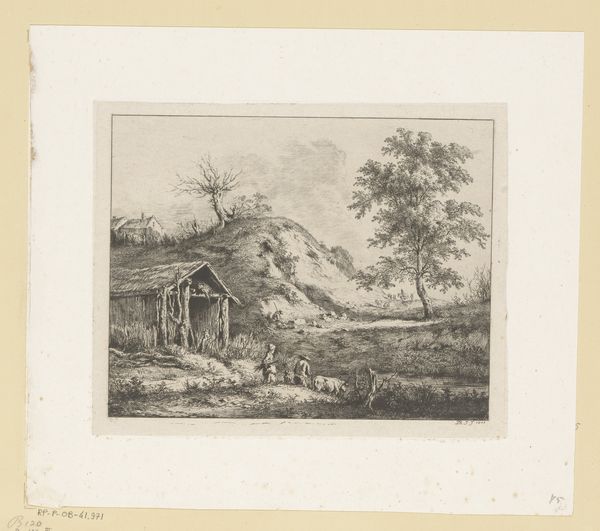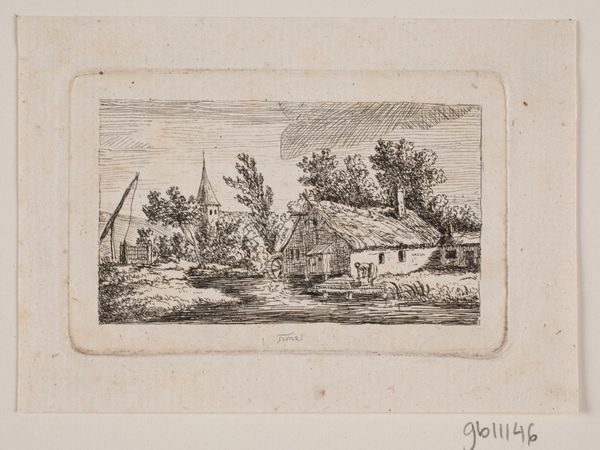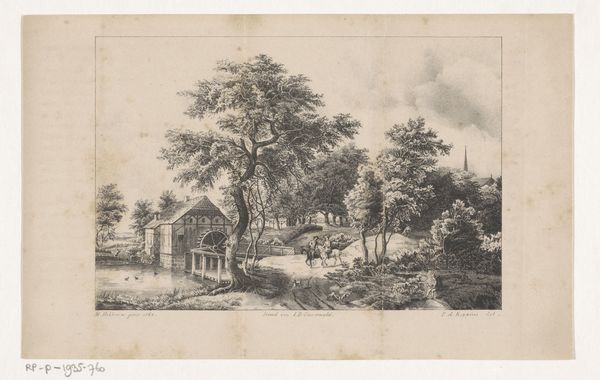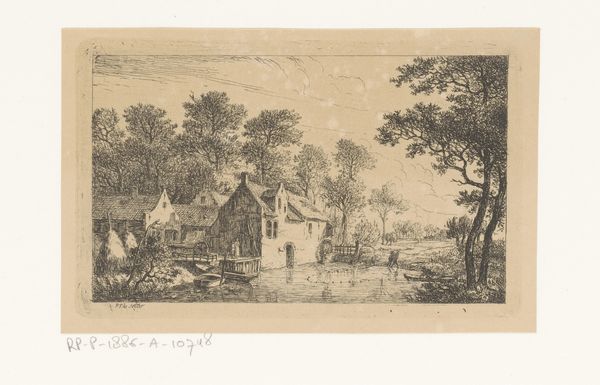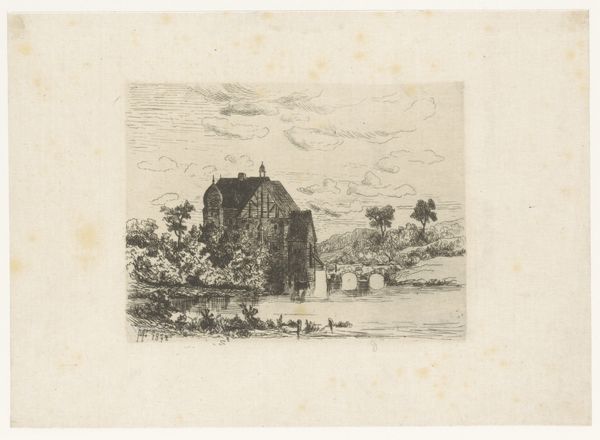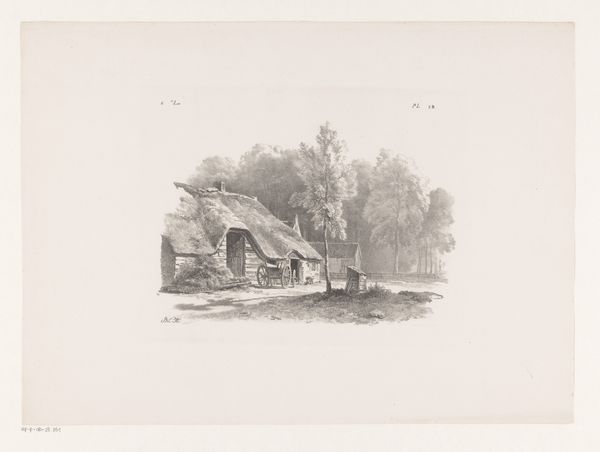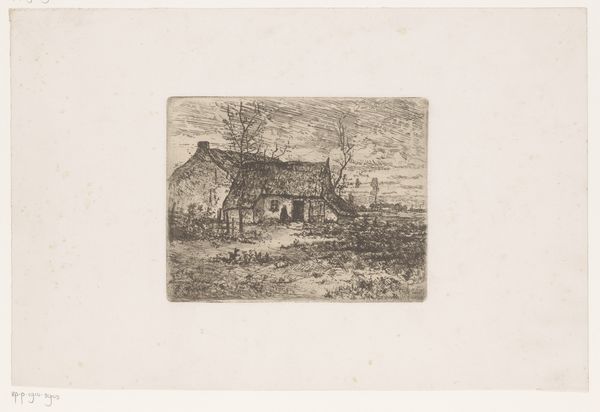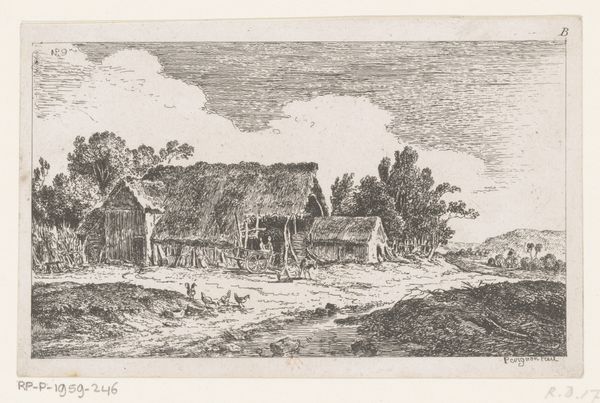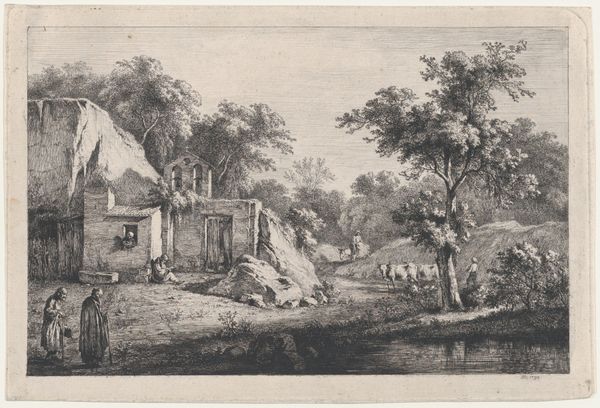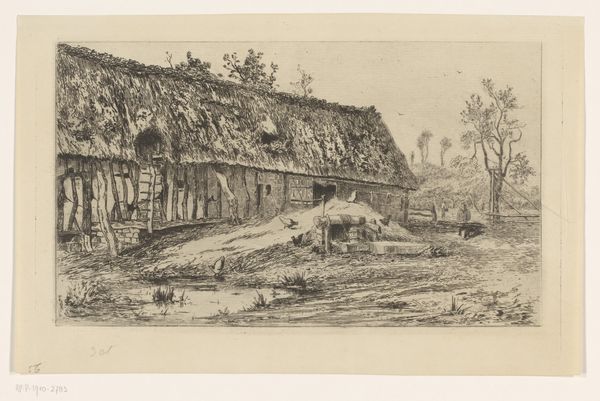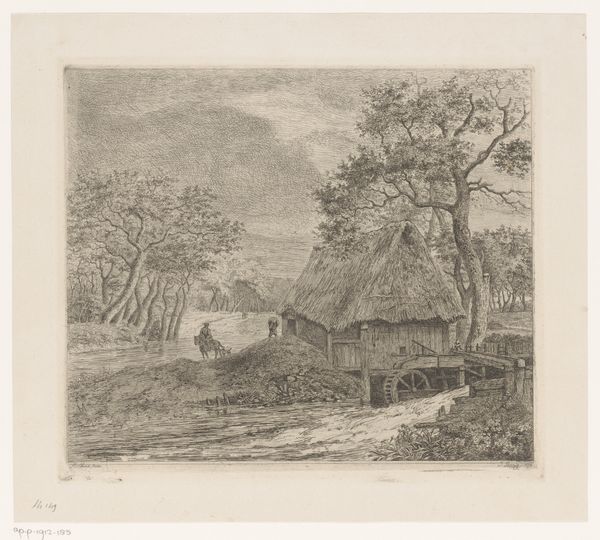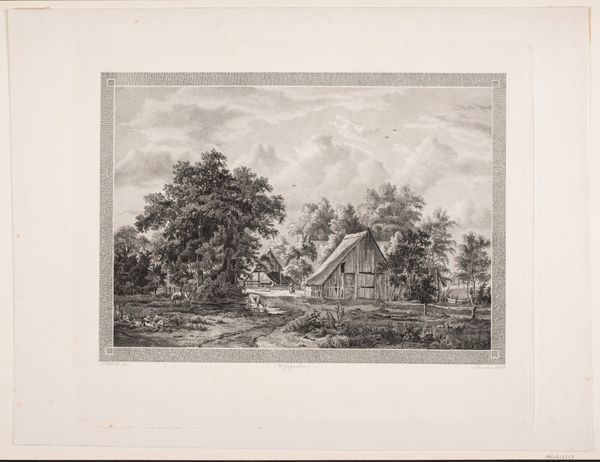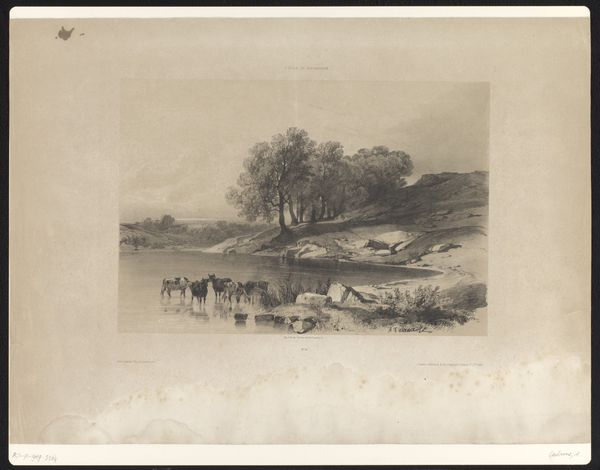
drawing, print, etching, paper
#
drawing
# print
#
etching
#
landscape
#
paper
#
realism
Dimensions: 90 × 169 mm (plate); 157 × 210 mm (sheet)
Copyright: Public Domain
Editor: We're looking at "Farmyard, from Revue Fantaisiste," an etching made in 1861 by Rodolphe Bresdin, currently at the Art Institute of Chicago. The etching is incredibly detailed and intricate. There’s almost a fantastical quality to the rendering of such a humble scene. What catches your eye in this print? Curator: It's fascinating to consider Bresdin's choice of etching – a process involving laborious, repetitive action - for depicting such everyday scenes of labor. It begs the question, how did the availability of etching materials, such as copper plates and acids, affect artistic production during this period? And, what audience was this 'Revue Fantaisiste' aimed at? Editor: That’s a great question. It definitely makes you consider the value of labour involved in its making. What does it mean to spend so much time on something that depicts ordinary life? Curator: Exactly. Bresdin is imbuing the commonplace with value through meticulous labor, a deliberate counterpoint perhaps to the burgeoning industrialization of the time. Consider also the role of printmaking itself. Were these images intended to be circulated widely, accessible to a broad segment of society, or catering to an elite market that valued detailed craftsmanship? How does that change our understanding of its "realism?" Editor: That's a perspective I hadn’t considered. It makes me think about accessibility. Was this etching a form of visual social commentary, democratizing art by depicting common life and making it reproducible? Curator: Precisely! We can see how the social and material conditions surrounding the production and consumption of art shaped both its content and its reach. Thinking about the "everyday" is quite loaded here. Editor: I see how material analysis opens a conversation on broader cultural values and access to the art market! It provides new depth. Curator: Indeed! Understanding the processes and materials enables us to explore those very conditions in new, thought-provoking ways.
Comments
No comments
Be the first to comment and join the conversation on the ultimate creative platform.
